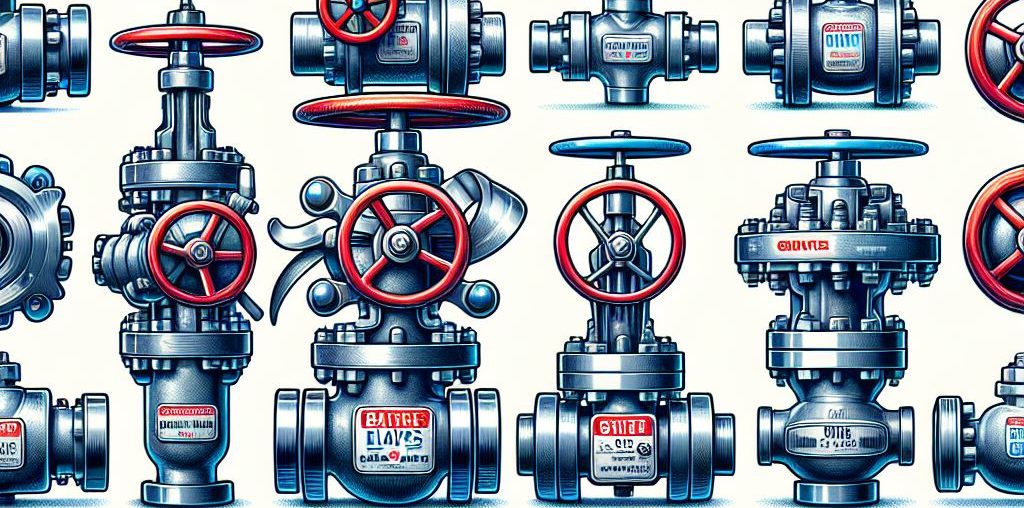Valve Testing
By: United Valve (http://www.unitedvalve.com/art-valve_testing.htm)
THE INCREASE IN GLOBALLY SOURCED PRODUCTS AND MUCH-REDUCED DOMESTIC MANUFACTURING HAS CAUSED EVERYONE IN THE VALVE SUPPLY CHAIN TO REQUEST AND REQUIRE MORE TESTING. HERE’S A LOOK AT SOME OF THE MOST COMMON VALVE TESTING STANDARDS IN USE TODAY ….. (read more ……)
Why Valve Qualification Programs?
By: United Valve (http://www.unitedvalve.com/art-valve_qualification_06.htm)
As the valve world continues to turn and tilt its production towards new countries and their untested manufacturing plants, the potential backlash is a rise in quality issues. In decades past, when bottom-dollar pricing was not the chief procurement driver, higher quality cast steel valves, produced in the United States, Great Britain, and Japan could be counted upon. Unfortunately, the global economic realities of the past 10 years have caused many of these companies to either cease production in their native countries or go out of business altogether. ….. (read more ……)
The Ever-Popular Gate Valve
By: United Valve (http://www.unitedvalve.com/art-gate-valve.htm)
This low-tech valve may not have changed much in the last 100 years, but the gate valve plays a major role in virtually every refinery, chemical plant and industrial facility in the world.
The most popular style of valve in the world of flow control is the gate valve. They are the on/off switches of the fluid control industry and they are found in every refinery, chemical plant, power plant and industrial facility. Gate valves exist for one primary purpose- to stop flow. Because of this, they are often referred to as “stop” or “block” valves. Gate valves are manufactured in a wide range of sizes- from ¼” through 144”. ….. (read more ……)
The Gate Valve’s Long History
By: United Valve (http://www.unitedvalve.com/art-gate-valve-history.htm)
The ubiquitous gate valve has a long history of serving the flow control industry in the United States. From its humble beginnings during the middle of the 19th century, to its universal usage today, the gate valve has soldiered on behind the scenes of America’s industrial pageantry.
The first valve patent in America was for a gate valve. It was issued in 1839 to New Haven resident, Charley W. Peckham. Although Mr. Peckham’ s patent was for a sluice gate valve, it was a gate valve nonetheless. It wasn’t until 1840 that the first gate valve as we would recognize it today was patented. It was called a “stop cock” and was issued to Theodore Scowden of Cincinnati, Ohio. Mr. Scowden’s valve was actually a unidirectional gate valve with a primitive bolted bonnet. ….. (read more ……)
Valve Repair, a Changing & Challenging Business
By: United Valve (http://www.unitedvalve.com/art-vm_valve_repair.htm)
Who Moved my Cheese? The heck with who moved my cheese, who moved my valve repair customers! Those of us in the valve repair business can certainly relate to Dr. Spencer Johnson’s book, “Who Moved My Cheese”, which deals with handling change. The way our business is rapidly changing, it feels like just about the time we figure out what the customer needs and how best to meet that need, some new paradigm takes over in the maintenance arena and voila… the rules have changed again!
In the 50’s and 60’s, to be successful in the valve repair business all that was required was some mechanical ability, good people skills and a nice fishing boat or a prolific deer hunting lease. Since then, we have seen the industry morph its way through end-user AML’s, manufacturer’s authorizations, OEM service centers, API Valve Repair Standards, ISO 9000, preventative maintenance and run-to-failure mode. The only constant through it all has been that there are still valves being repaired. ….. (read more ……)
Valve Modification
By: United Valve (http://www.unitedvalve.com/art-valve_modification.htm)
In a perfect world of valve supply and demand, an end-user would be able to purchase any combination of valve configurations from the distributor with only a few days notice. The commonly-stocked ‘standard trim’ valves would share shelf space with the most unusual trimmed or end-configured valves. However, in this world of globally procured commodity steel valves and ‘just-in-time’ inventories, it is not a financially viable option. So in order to meet the demand for these specials in the United States, the valve modification industry was created. ….. (read more ……)
Valve Owner’s Survival Kit
By: United Valve (http://www.unitedvalve.com/art-valve_survival.htm)
It’s a jungle out there, so the saying goes. Unfortunately, that jungle extends to and includes your work environment. And if you are responsible for some part of a chemical processing facility, the vines and beasts of that jungle wrap around and through the pipe racks, instrument panels and valves you call home every workday.
If this sounds familiar to you then you probably won’t turn down a little survival help. ….. (read more ……)
Valve Repair in the 21st Century
By: United Valve (http://www.unitedvalve.com/art-valve_repair_21st.htm)
Once upon a time, most large refineries and chemical plants had their own valve shops, complete with a full compliment of experienced valve repair technicians. These service departments took care of most of the plants repair needs, although oftentimes valves were simply replaced rather than refurbished. ….. (read more ……)
Valve Standards in The Petrochemical & Refining Industry
By: United Valve (http://www.unitedvalve.com/art-valve_standards.htm)
Valves in petrochemical and refining installations are subject to numerous standards and specifications issued by many supporting organizations. Today’s valve standards are dynamic documents that reflect sound engineering practice, changes in market demands and changes in technology and manufacturing procedures. ….. (read more ……)


